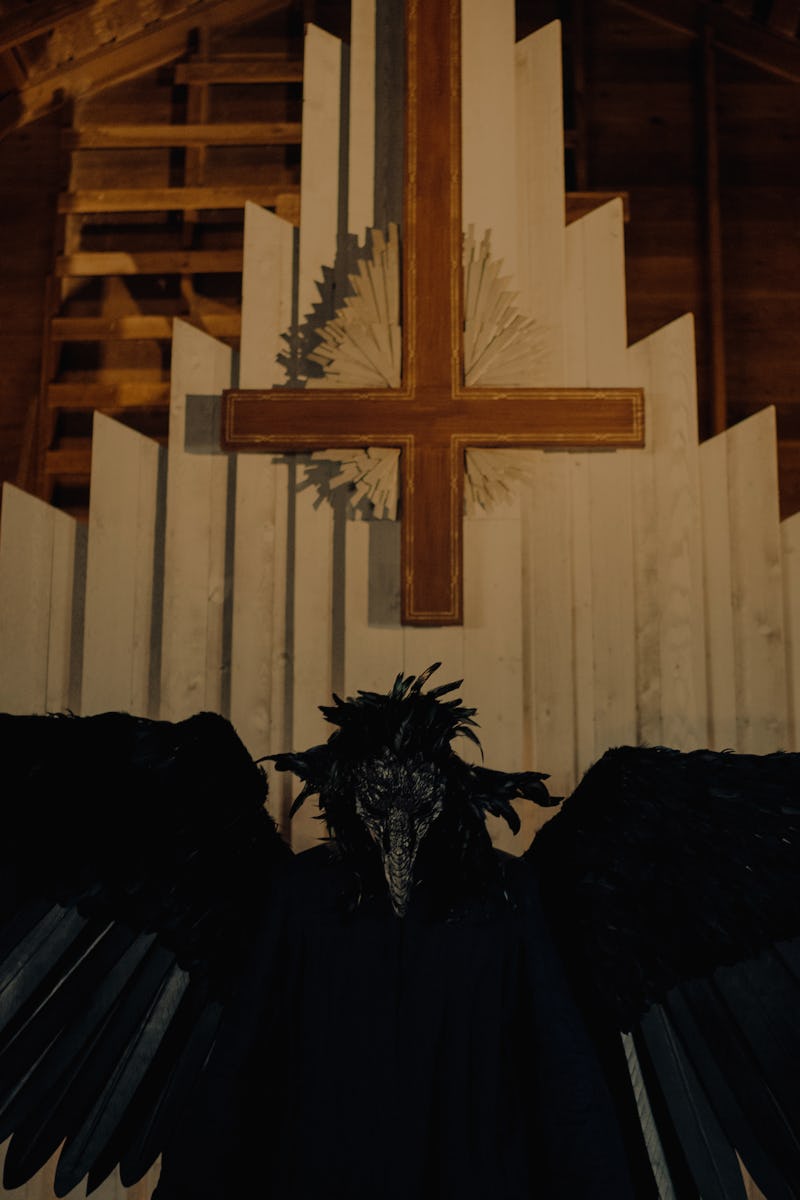
“The Chain Shall Not Be Broken”
There’s a seemingly endless appetite for stories about cults, whether that’s documentaries like Keep Sweet: Pray and Obey (about the infamous Fundamentalist Church of Jesus Christ of Latter-Day Saints), dramatizations of real-life events like the mini-series Waco, or high-concept movies like The Master.
These shows and movies have found a second life on streaming, where the cult-obsessed can binge endless hours of riveting entertainment, and no platform does this better than Netflix, which has been pumping out these stories for years. The end result of all this may very well be Devil in Ohio, a new cult drama series made by the cult-obsessed and for the cult-obsessed.
Daria Polatin, who wrote the original YA novel and serves as showrunner, tells Inverse that the reason why we’re obsessed with cults is simpler than you might think. “It's a very it-could-happen-to-you subject, which is why it's so fascinating to watch.”
Cults and extreme beliefs fascinate us because we are all susceptible to their pull. Cult Week explores these stories — and the liminal spaces between the real and the imaginary.
Devil in Ohio follows psychologist Suzanne Mathis (Emily Deschanel), who brings Mae, a mysterious girl with a pentagram carved into her back, into her home. Mae’s haunting presence causes tension for the Mathis family and sparks outrage from Amontown, the cult she escaped from.
“A lot of it is taken from the traditional Christian Bible, but then turned on its head.”
The Amontown cult is loosely inspired by a real-life cult, but Polatin built the Amontown cult from the ground up.
“We did lots of research and interviews, read books, and watched documentaries,” Polatin says. “We actually even wrote part of our Book of Covenants, our cult's Bible. A lot of it is taken from the traditional Christian Bible, but then turned on its head.”
Over the course of its eight episodes, Devil in Ohio effortlessly weaves multiple genres together to craft a story that keeps you guessing. Because of the YA source material, much of the action surrounds Mae’s interactions with Suzanne’s middle child, Jules. Jules and Mae are the same age, so when they enter high school, Jules questions Mae’s approach to the social sphere — and her intentions within the family.
But outside of those suspense-driven scenes, Devil in Ohio series is a drama thriller through and through. Suzanne’s investigation into Amontown and Mae’s past takes up much of her life. She’s driven by a basic sense of empathy, but also by something in her own past. It spirals into a twist ending that’s completely different from what you might expect to happen, in more ways than one.
Mae and Suzanne first meet in the hospital in Devil in Ohio Episode 1.
Perhaps most importantly, this show is created by people who fully understand the draw cult stories can have on audiences.
“The line is just so fine between our everyday lives of what we do to fit into like a friend group or a family,” Polatin says. “If you just expand that gap a little bit and put it under a genre lens, then you have a thriller.”
Devil in Ohio has all the hallmarks of a classic Netflix original miniseries: a haunting theme song, grey/blue color grading, and a suburban setting. But the cult aspect surrounding Mae and Amontown is what could make the drama the next cult story with its own massive following. As the weather chills and the nights get longer, curl up with this spooky thriller and escape into the mystical world of... Ohio.
Devil in Ohio is now streaming on Netflix.
Cults and extreme beliefs fascinate us because we are all susceptible to their pull. Cult Week explores these stories — and the liminal spaces between the real and the imaginary. Check out our hub to read more stories about cults and extreme beliefs.